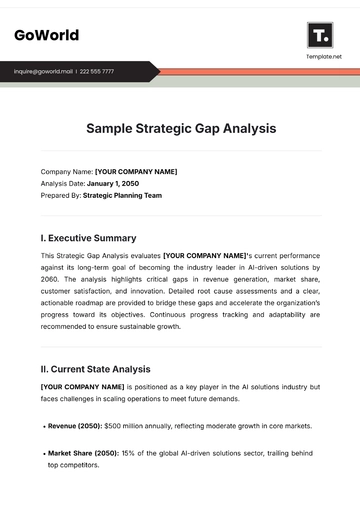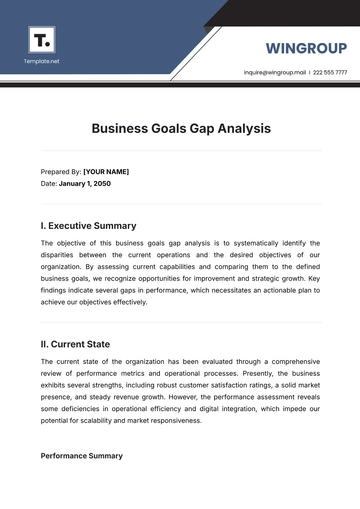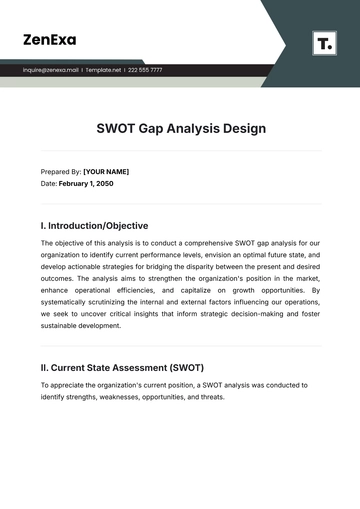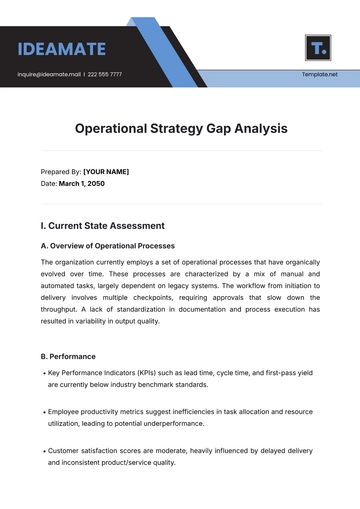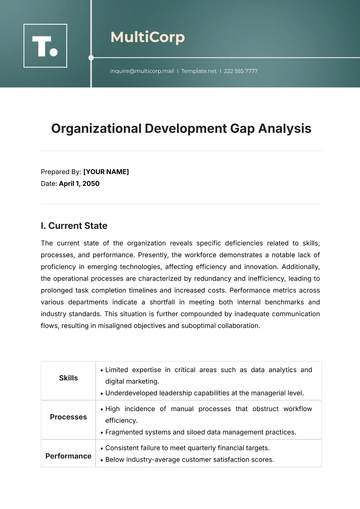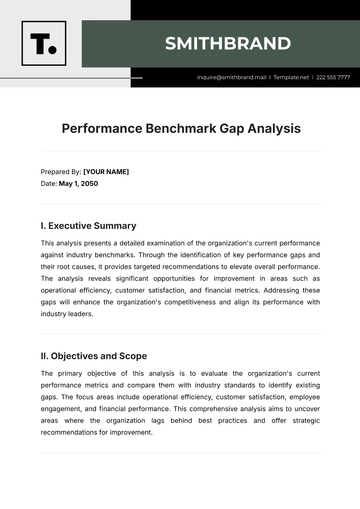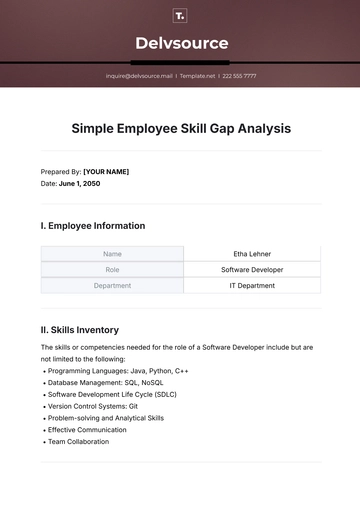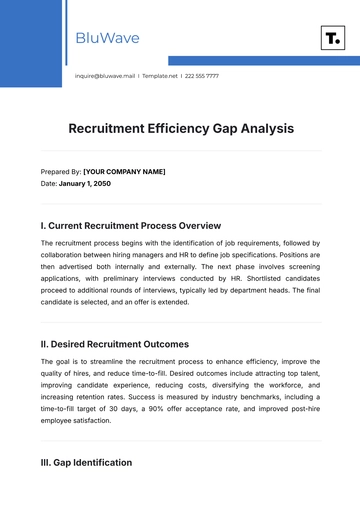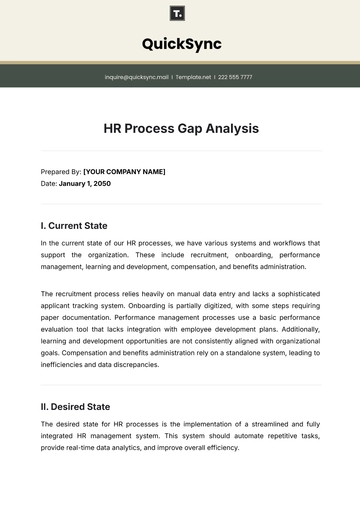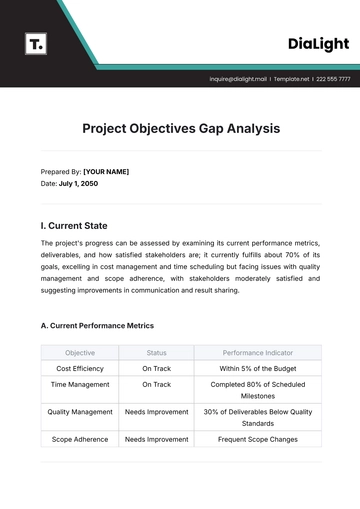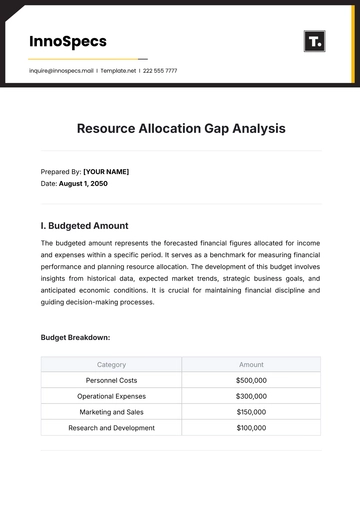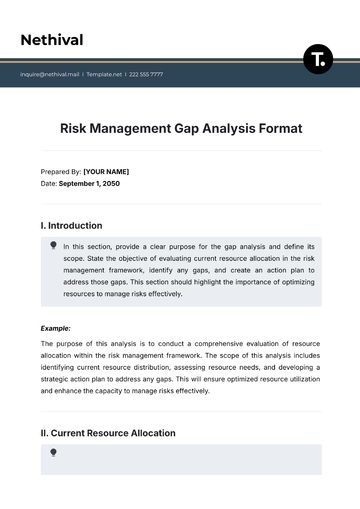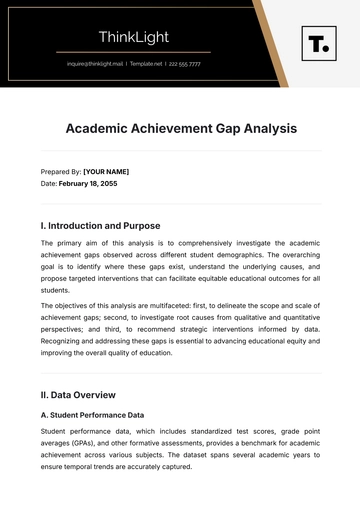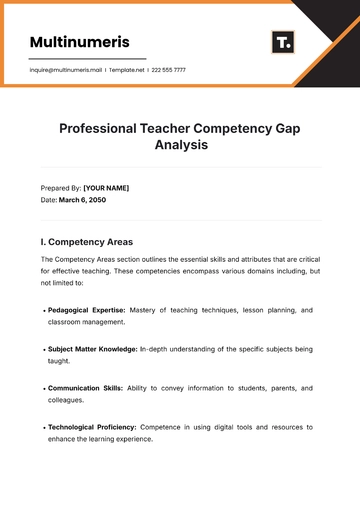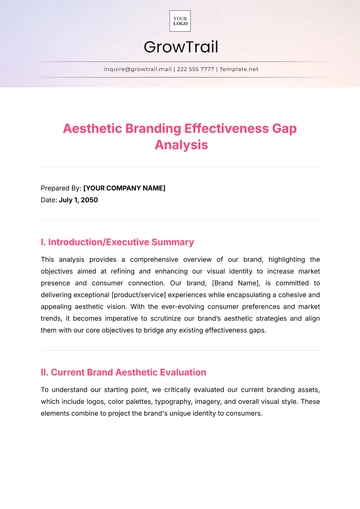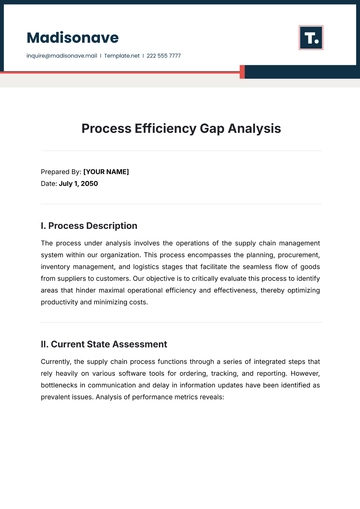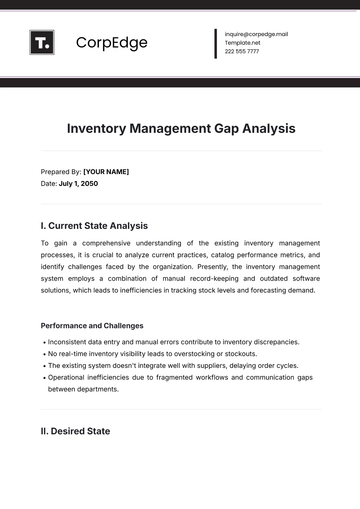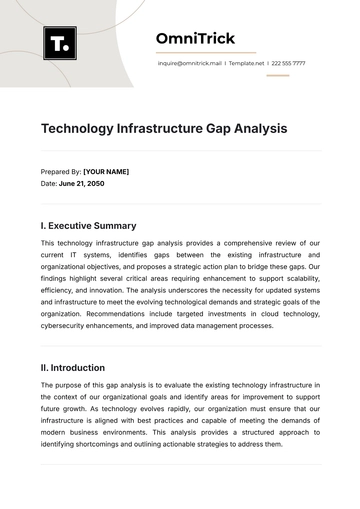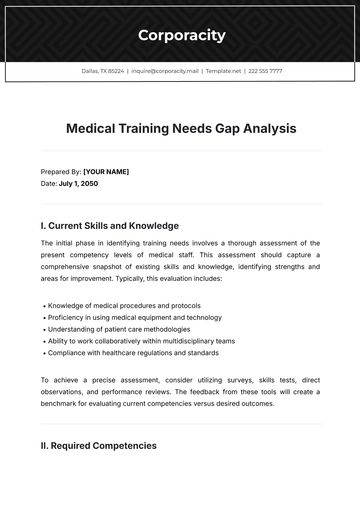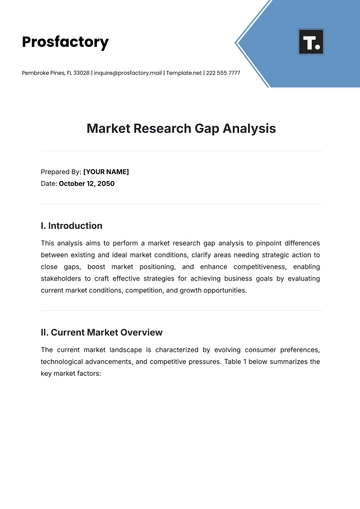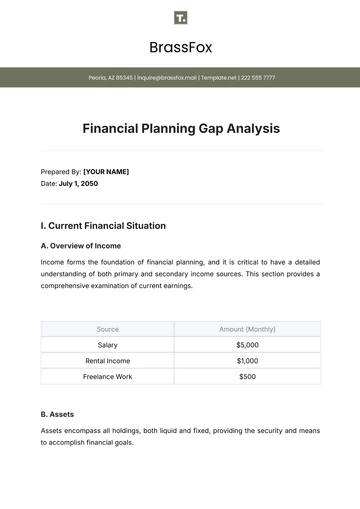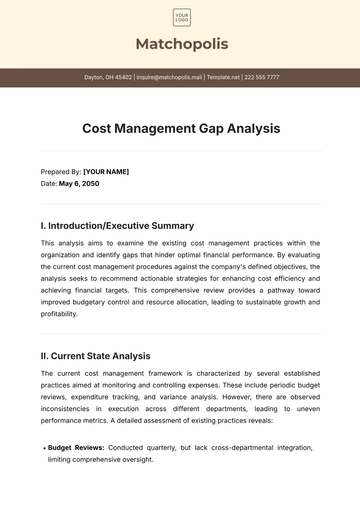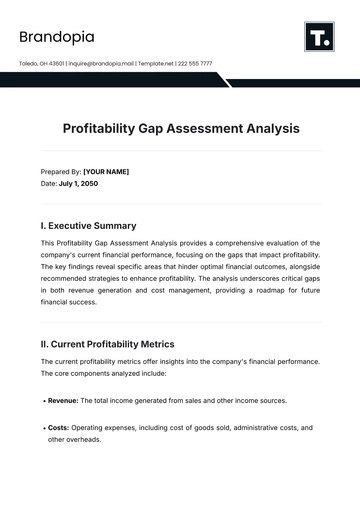Free Nursing Home Staffing Analysis

I. Introduction
A. Objective
The primary objective of this comprehensive analysis is to assess the current state of competency in our nursing homes operated under [Your Company Name]. This objective is not just about meeting regulatory requirements or achieving operational efficiency. It’s about ensuring that we provide the highest quality of care to our residents, who trust us with their health and well-being.
This analysis aims to identify areas of strength and areas for improvement in our nursing homes. By understanding where we excel and where we can do better, we can make informed decisions about resource allocation, staff training, and service improvements. This will help us ensure that our nursing homes continue to be places where residents feel safe, cared for, and valued.
B. Scope of Evaluation
Areas of Evaluation: The evaluation encompasses various areas including staffing, nursing practice, facility environment, caregivers’ training, and residents’ satisfaction. Each of these areas plays a crucial role in determining the overall competency of our nursing homes. By evaluating these areas, we can get a holistic view of our performance and identify opportunities for improvement.
Importance of Each Area: Each area that we evaluate has a direct impact on the quality of care that we provide. For example, having a well-trained and sufficient staff is crucial for ensuring that residents receive timely and appropriate care. Similarly, the environment of the facility plays a big role in the residents’ quality of life. Therefore, we need to ensure that our facilities are clean, safe, and conducive to the well-being of our residents.
Interconnectedness of Areas: The areas that we evaluate are not isolated from each other. They are interconnected and influence each other. For example, the level of caregivers’ training can affect the quality of nursing practice. Similarly, the level of residents’ satisfaction can be influenced by the staffing levels and the environment of the facility. Therefore, while we evaluate each area separately, we also consider how they interact and influence each other.
II. Methodology
A. Staffing Data Acquisition
Data Gathering: The data for this analysis was procured from a variety of sources specific to our nursing homes under [Your Company Name]. These sources include staffing rosters, shift schedules, and employee records. This ensures that our analysis is based on accurate and up-to-date staffing information.
Employee Surveys: In addition to the objective data, we also collected subjective data through employee surveys. This helped us understand the staff’s perspective on their workload, work-life balance, and overall job satisfaction.
Government Audits and Regulations: We also considered data from government audits and regulations related to nursing home staffing. This helped us ensure that our staffing practices are in compliance with legal requirements.
B. Analytical Techniques
Workforce Analysis: We conducted a thorough analysis of our workforce, considering factors such as staff-to-patient ratios, staff qualifications, and shift patterns. This helped us understand the current state of our staffing and identify any potential issues.
Benchmarking: We compared our staffing data with industry standards and best practices. This helped us understand how our staffing levels and practices measure up against other nursing homes.
Trend Analysis: We analyzed staffing trends over time, looking for any significant changes or patterns. This helped us understand how our staffing needs have evolved and predict future staffing requirements.
C. Data Processing and Validation
Data Cleaning: We cleaned the collected data to remove any inconsistencies or errors. This step is crucial to ensure the accuracy of our analysis.
Data Standardization: We standardized the data to ensure that it is consistent and comparable. This involved converting all data to a common format or unit of measure.
Data Validation: We validated the data by cross-checking it with other sources. This helped us ensure that the data is reliable and accurate.
D. Data Interpretation
Statistical Analysis: We used statistical analysis to interpret the data. This involved calculating averages, variances, and other statistical measures to understand the distribution and trends in our staffing data.
Correlation Analysis: We analyzed the correlation between different staffing variables and key outcomes such as patient satisfaction and quality of care. This helped us understand the impact of our staffing practices on our nursing home operations.
Predictive Modeling: We used predictive modeling techniques to forecast future staffing needs based on current trends and patterns. This will help us plan our staffing strategies effectively.
E. Recommendations Formulation
Insights-Based Recommendations: Based on the insights from the analysis, we formulated recommendations to improve our staffing practices. These recommendations are tailored to our specific needs and challenges, ensuring their relevance and effectiveness.
Action Plan Development: For each recommendation, we developed a detailed action plan outlining the steps needed to implement the recommendation. This includes identifying responsible parties, setting timelines, and defining success metrics.
Continuous Monitoring and Evaluation: We plan to continuously monitor and evaluate the implementation of our recommendations. This will help us track our progress, make necessary adjustments, and measure the impact of our actions.
III. Findings
The data collected and analyzed in the previous section has yielded significant insights into the staffing situation at our nursing homes under [Your Company Name]. These findings are crucial in understanding the current state of our staffing and identifying areas that require attention. The following chart and table present a summary of our key findings:
Nursing Home | Nurse-Patient Ratio | Patient Satisfaction | Staff Retention |
|---|---|---|---|
[Nursing Home 1] | 1:5 | 85% | 70% |
[Nursing Home 2] | 1:7 | 80% | 60% |
[Nursing Home 3] | 1:8 | 75% | 65% |
A. Nurse-Patient Ratio
The nurse-patient ratio is a critical indicator of the quality of care in nursing homes. Our analysis shows that [Nursing Home 1] has the lowest ratio of 1:5, indicating a higher number of nurses per patient. This suggests that patients at [Nursing Home 1] are likely to receive more individual attention and care. On the other hand, [Nursing Home 3] has the highest ratio of 1:8, suggesting a potential need for additional staffing.
B. Patient Satisfaction
Patient satisfaction is a direct reflection of the quality of care provided by our nursing homes. Our findings show that [Nursing Home 1], which also has the lowest nurse-patient ratio, has the highest patient satisfaction score of 85%. This underscores the importance of adequate staffing in ensuring patient satisfaction.
C. Staff Retention
Staff retention is a measure of job satisfaction among staff and a key indicator of the work environment. Our analysis reveals that staff retention rates vary across our nursing homes, with [Nursing Home 1] having the highest rate of 70%. This suggests that staff at [Nursing Home 1] are relatively more satisfied with their jobs compared to those at other nursing homes.
These findings provide valuable insights into the staffing situation at our nursing homes. However, it’s important to remember that these are just numbers. Behind these numbers are the dedicated staff who work tirelessly to provide the best possible care to our residents. Therefore, it’s crucial that we use these findings not just to improve our numbers, but to create a better working environment for our staff and a better living environment for our residents.
Moreover, these findings underscore the importance of regular staffing analysis. By keeping a close eye on our staffing situation, we can proactively address any issues that arise and continuously improve our staffing practices. This will not only enhance the quality of care we provide to our residents but also contribute to job satisfaction among our staff, thereby creating a positive cycle of improvement.
IV. Analysis
A. Staffing Levels
Correlation with Patient Satisfaction: Our analysis shows that staffing levels correlate with patient satisfaction. Higher staffing levels lead to improved patient reviews, indicating the importance of maintaining adequate staffing levels.
Variation Across Nursing Homes: There is a significant variation in staffing levels across the different nursing homes. This variation could impact the quality of care provided and needs to be addressed.
Impact on Workload: The staffing levels also have a direct impact on the workload of the staff. Understaffing can lead to increased workload, which can affect the quality of care and job satisfaction among staff.
Need for Optimal Staffing: It’s crucial to find the optimal staffing level that ensures high-quality care while also considering the cost-effectiveness. Overstaffing can lead to unnecessary costs, while understaffing can compromise the quality of care.
Role of Management: The management plays a crucial role in maintaining optimal staffing levels. This includes effective scheduling, managing leave and absences, and hiring additional staff when needed.
B. Nurse-Patient Ratio
Impact on Quality of Care: The nurse-patient ratio is a key factor that affects the quality of care. A lower ratio means that each nurse has fewer patients to care for, which can lead to more personalized and attentive care.
Variation Across Nursing Homes: Our analysis shows a significant variation in the nurse-patient ratio across the different nursing homes. This variation needs to be addressed to ensure consistent quality of care across all nursing homes.
Industry Standards: The nurse-patient ratio should be in line with industry standards. A ratio that is too high or too low can be a red flag and needs to be investigated.
Role of Management: The management needs to monitor the nurse-patient ratio regularly and take necessary actions to maintain an optimal ratio. This can include hiring more nurses, redistributing the workload, or adjusting the patient intake.
Patient Satisfaction: A lower nurse-patient ratio can lead to higher patient satisfaction as patients receive more individual attention and care.
C. Staff Retention
Indicator of Job Satisfaction: Staff retention is a key indicator of job satisfaction among staff. A high staff retention rate suggests that staff are satisfied with their jobs and the work environment.
Impact on Continuity of Care: High staff retention contributes to the continuity of care, as residents receive care from familiar staff who understand their needs and preferences.
Cost Implications: High staff turnover can lead to increased costs related to recruitment, training, and loss of productivity. Therefore, improving staff retention can also have financial benefits.
Role of Management: The management plays a crucial role in improving staff retention. This can include providing competitive compensation, creating a positive work environment, offering professional development opportunities, and recognizing and appreciating the staff’s hard work.
Staff Feedback: Regular feedback from staff can provide valuable insights into the reasons for leaving or staying, which can inform strategies to improve staff retention.
V. Actionable Recommendations
A. Staffing Levels
Invest in Staffing: Invest in hiring additional staff to ensure adequate staffing levels, particularly during peak times and night shifts. This investment will not only improve patient care but also reduce the workload on existing staff, thereby improving job satisfaction and staff retention.
Effective Scheduling: Implement effective scheduling practices to optimize the use of available staff. This includes considering the peak times for patient care needs, staff availability, and the need for rest and recovery time for staff.
Flexible Staffing Models: Consider implementing flexible staffing models, such as on-call or float pools, to address fluctuations in patient numbers and care needs. This can provide additional staffing resources when needed without the need for permanent hires.
Staffing Audit: Conduct regular staffing audits to assess the adequacy of current staffing levels and identify any gaps. This can help ensure that staffing levels are adjusted in a timely manner to meet changing needs.
Benchmarking: Benchmark our staffing levels against industry standards and best practices to ensure that we are adequately staffed. This can provide a reference point for our staffing practices and help identify areas for improvement.
B. Nurse-Patient Ratio
Standardize Ratios: Standardize nurse-patient ratios across all facilities to ensure uniform high-quality care. This can help ensure that all patients receive the same level of care, regardless of which facility they are in.
Monitor Ratios: Regularly monitor nurse-patient ratios to ensure that they remain within acceptable limits. Take immediate action to adjust staffing levels if the ratio becomes too high.
Patient Needs Assessment: Conduct regular patient needs assessments to determine the appropriate nurse-patient ratio. The ratio should be adjusted based on the complexity and intensity of patient care needs.
Staff Input: Involve staff in discussions about nurse-patient ratios. Their input can provide valuable insights into the practical implications of different ratios.
Regulatory Compliance: Ensure that our nurse-patient ratios comply with regulatory requirements. Regularly review regulations to stay updated on any changes.
C. Staff Retention
Improve Work Environment: Improve the work environment to enhance job satisfaction and staff retention. This can include addressing workload issues, improving communication and teamwork, and promoting a culture of respect and appreciation.
Professional Development: Implement a robust professional development program to boost staff retention rates. This program should include ongoing training opportunities.
Professional Development: Implement a robust professional development program to boost staff retention rates. This program should include ongoing training opportunities, mentorship programs, and career advancement opportunities. By investing in the professional development of our staff, we not only enhance their skills and knowledge but also show them that we value their growth and career progression.
Competitive Compensation: Offer competitive compensation packages to attract and retain quality staff. This includes not only salaries but also benefits such as health insurance, retirement plans, and paid time off.
Employee Recognition: Implement an employee recognition program to acknowledge and appreciate the hard work and dedication of our staff. This can boost morale, increase job satisfaction, and improve staff retention.
VI. Conclusion
Our analysis of the staffing situation at [Your Company Name]'s nursing homes has provided valuable insights into our current practices and areas for improvement. The findings underscore the importance of maintaining optimal staffing levels and a low nurse-patient ratio to ensure high-quality care. They also highlight the need for a robust professional development program and a positive work environment to improve staff retention.
It is also important to remember that these recommendations are not a one-time solution but require ongoing effort and commitment. Staffing is a dynamic aspect of nursing home operations that needs continuous monitoring and adjustment. By staying committed to this process, we can ensure that our staffing practices continue to meet the needs of our residents and staff, thereby enhancing the overall quality of care at our nursing homes.
Overall, the staffing analysis of [Your Company Name]'s nursing homes has not only identified areas for improvement but also reaffirmed our commitment to providing the best possible care to our residents. By implementing the recommended actions, we are confident that we can further enhance our staffing practices, improve staff satisfaction, and ultimately, provide better care to our residents. We look forward to the positive changes that these improvements will bring to our nursing homes and the lives of our residents.
- 100% Customizable, free editor
- Access 1 Million+ Templates, photo’s & graphics
- Download or share as a template
- Click and replace photos, graphics, text, backgrounds
- Resize, crop, AI write & more
- Access advanced editor
Optimize staffing levels with this customizable Nursing Home Staffing Analysis Template provided by Template.net! Featuring editable fields, this template allows for detailed analysis of staffing data to ensure adequate coverage and efficient resource allocation. Utilize the AI Editor Tool to streamline the process and generate actionable insights! Get started immediately!

